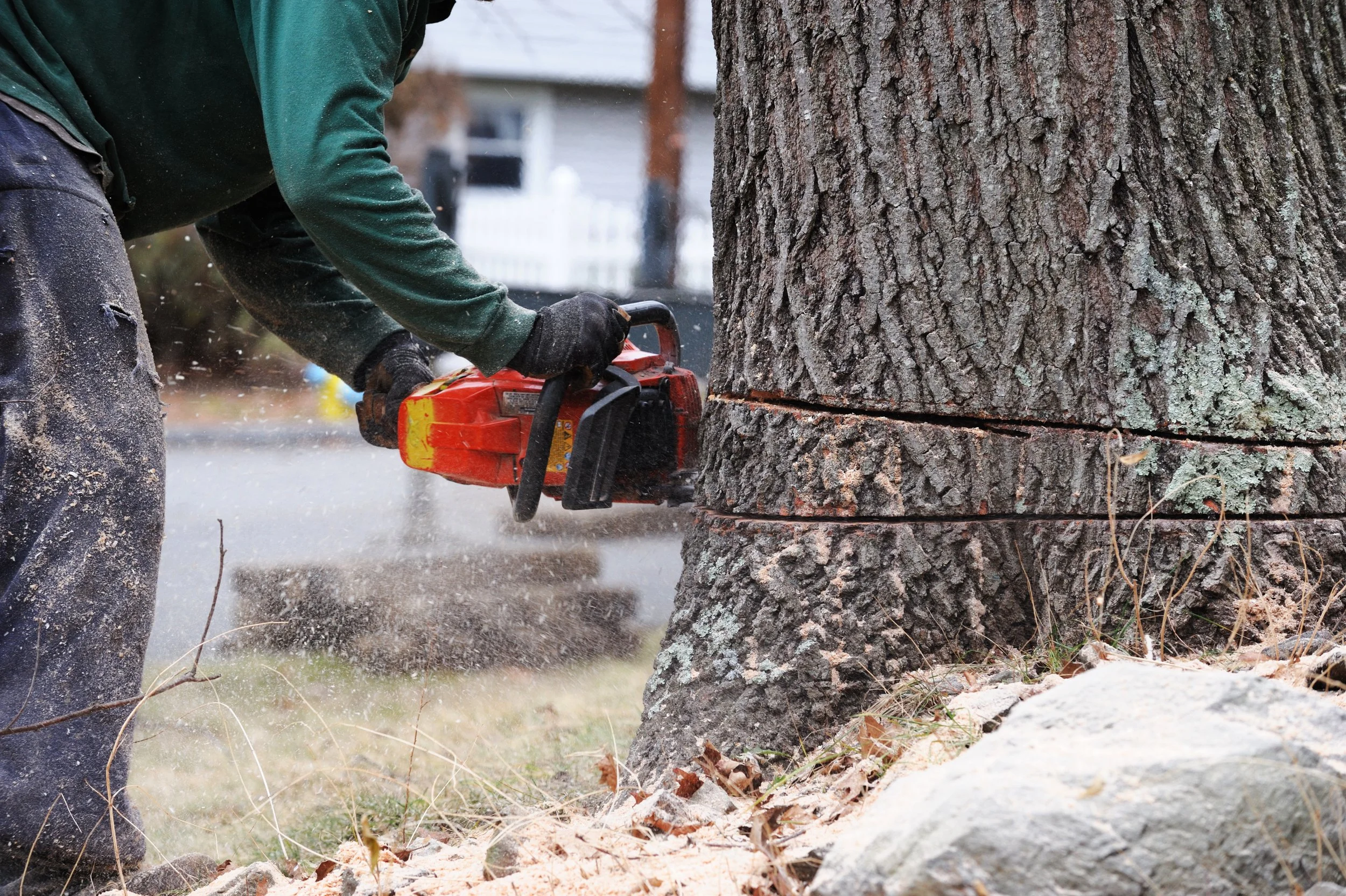Removing trees from your Melbourne property: A guide to the process of gaining council approval
In this blog post, we will learn about the permits and processes for removing trees from your property in Victoria, Australia and get tips on how to handle some of the most notorious councils we have encountered.
Removing a tree: Can I do it without consent?
Tree removal on a private property is a common task that may be necessary for a variety of reasons. A homeowner wishing to demolish their existing house to construct a new one, or a new set of units, is one of the most common situations. This process often requires the removal of trees from the property to ensure a clear and safe working platform. It is needed before excavation works and the construction of the new structure(s).
Another common situation is when a tree or its roots are impacting the home/property in some way. This could include tree roots infiltrating the plumbing system, causing damage, causing leaks, or causing blockages. Regardless of the reason for removing a tree from your property, you must understand the laws in your local council before proceeding.
Every council has its unique requirements. But there are some circumstances that most councils allow for tree removals without a permit. These include fallen trees, storm-damaged trees, and trees that pose an immediate threat to you or your property. Note: The above list is a general guide. Please refer to your council's laws about tree removals before proceeding.
Tree roots can cause masonry cracking in nearby structures and subsidence.
Do I need a planning permit?
You may need a planning permit to remove or even prune a tree if your property is subject to a current planning permit. The permit may include conditions that relate to trees, or if your property is located within a planning overlay area.
Planning overlays are not in use on every block of land, but, it is important to know if the block that you own is subject to one. A planning overlay is a control method that provides restrictions on the use of the land and what can be developed on it. Planning overlays are used when the council believes that there is a special feature on the land that they want to be protected.
The most common overlay areas that you might see when searching through the councils' websites are:
Heritage Overlays
Significant Landscape Overlays
Native vegetation
Environmental Significance Overlays
Erosion Management Overlays
Before making an application to remove a tree, you should first understand if you need a planning permit. Most councils have a feature on their websites where you can type in your property address and find out the type of overlay that affects you. Or, you can call the council to find out.
So, what’s the process for removing a tree?
Every council will need different information and documentation from you, before a decision can be made. Some of the more common requirements across the board are:
Information/statement advising the reason you wish to remove the tree
Payment of an application fee
A specialist report from a structural engineer, if the removal is related to protecting a house or other structure
Images of the tree
An arborist report related to the tree
All the above steps are at the owners' expense and is your responsibility to arrange before submitting an application.
Let’s break down four of the most common councils we have dealt with in the past and their specific requirements.
Refer to your local council’s laws before you proceed with removing a tree on your property.
Moreland City Council
To apply for a tree removal permit you will need the following information:
A statement outlining the reason for wanting to remove the tree(s) (eg. Demolition and rebuild).
A report from a qualified arborist.
A report from a qualified structural engineer or plumber. You will need these reports if the reason for removing the trees is due to the tree damaging plumbing systems or structures such as houses.
You will need to include information about the tree(s) height, diameter, type, and location within the property.
Pay the tree Removal application fee.
If you are proposing to remove a tree, you must replace the tree on your property with an appropriate canopy tree. You can find a range of tree options using the tree finder tool on the councils' website. The new tree may be planted in a different location. You will need to provide a plan or sketch of the location of the new trees.
Whitehorse council
Firstly you will need to confirm if your property is subject to an overlay that inhibits the removal of trees on your property. You will also need to confirm if you need a planning permit for the work.
Once you know what overlay you are in, it will tell you whether you need a planning permit to remove the tree. Often if you are permitted to remove a tree, a replacement tree must be planted.
To apply for a tree removal permit you will need the following information:
An application must include a written assessment by a qualified Arborist. This assessment would include the species, health, structure and useful life expectancy of the tree(s) to be removed. It would also include an adequate explanation for their removal (preferably with a plan showing the location of trees).
Pay the Tree Removal application fee.
Darebin council
You only need a permit to remove trees if there is an overlay or if it is considered a ‘significant tree’. A significant tree has a single or combined trunk circumference greater than 100cm (1000mm), measured at 1.5 m above ground level and is taller than 8m.
To apply you will need:
A report from a qualified engineer or plumber if the reason for wanting to remove the trees is due to tree root damage to plumbing systems
To pay the Tree Removal application fee
Banyule council
All the residential areas are subject to tree protection overlays under the Banyule Planning Scheme. To determine if you need a permit to remove a tree based on the overlay that affects you, you need to call the council.
To apply for a tree removal permit you will need the following information:
Number of trees involved.
Type of work associated with each tree.
A description of each tree.
Species of each tree (if known).
An explanation for why the work is needed.
A photograph of each tree.
Plan of the property.
The status of trees being listed on the council significant tree register.
Pay the application fee ($101.50 to $202.90 based on the scope of works).
An arborist report (in certain cases). For example, if 4 or more trees are involved, or if any tree is listed on the significant tree register or if the work is associated with a development.
If there is enough reason for you to remove the tree, you should be granted approval for your application. However, in other circumstances, you may need more supporting evidence before gaining approval from your local Victorian council.
Approved or not approved
The likeliness of your application being approved is pretty high if you are not subject to a planning permit or overlay. So long as there is enough reason for you to want to remove the tree, you should be granted the tick of approval pretty easily.
Yet, if you are subject to a planning overlay, it does become much more difficult to get approval. Councils won’t grant you consent easily in these situations as they have put a restriction on it initially as they believe it should be protected. In these situations, having as much supporting evidence on your side to prove the need for removing the tree is beneficial to your case. Specialist reports can help prove that the trees are causing damage to your property and are becoming a costly burden to your everyday life.
Our qualified engineers have provided many reports that have assisted in obtaining approval for the removal of trees. In these cases, we recommended that they are removed to prevent further damage from occurring.
In any situation, it is necessary to have approval before going ahead with cutting down a tree, otherwise, you may face a hefty fine. Each council will fine differently but the penalty for most councils is up to $5,000 per offence.
How can we help?
If you are planning on removing a tree from your property for any reason and need a specialist report to support your case, we are here to help. At Arbiter Group, our structural engineers and plumbing specialists can provide reports to help get an approval. If you suspect there are structural issues with your home, don’t wait, get in contact today to find out how we can help you.




